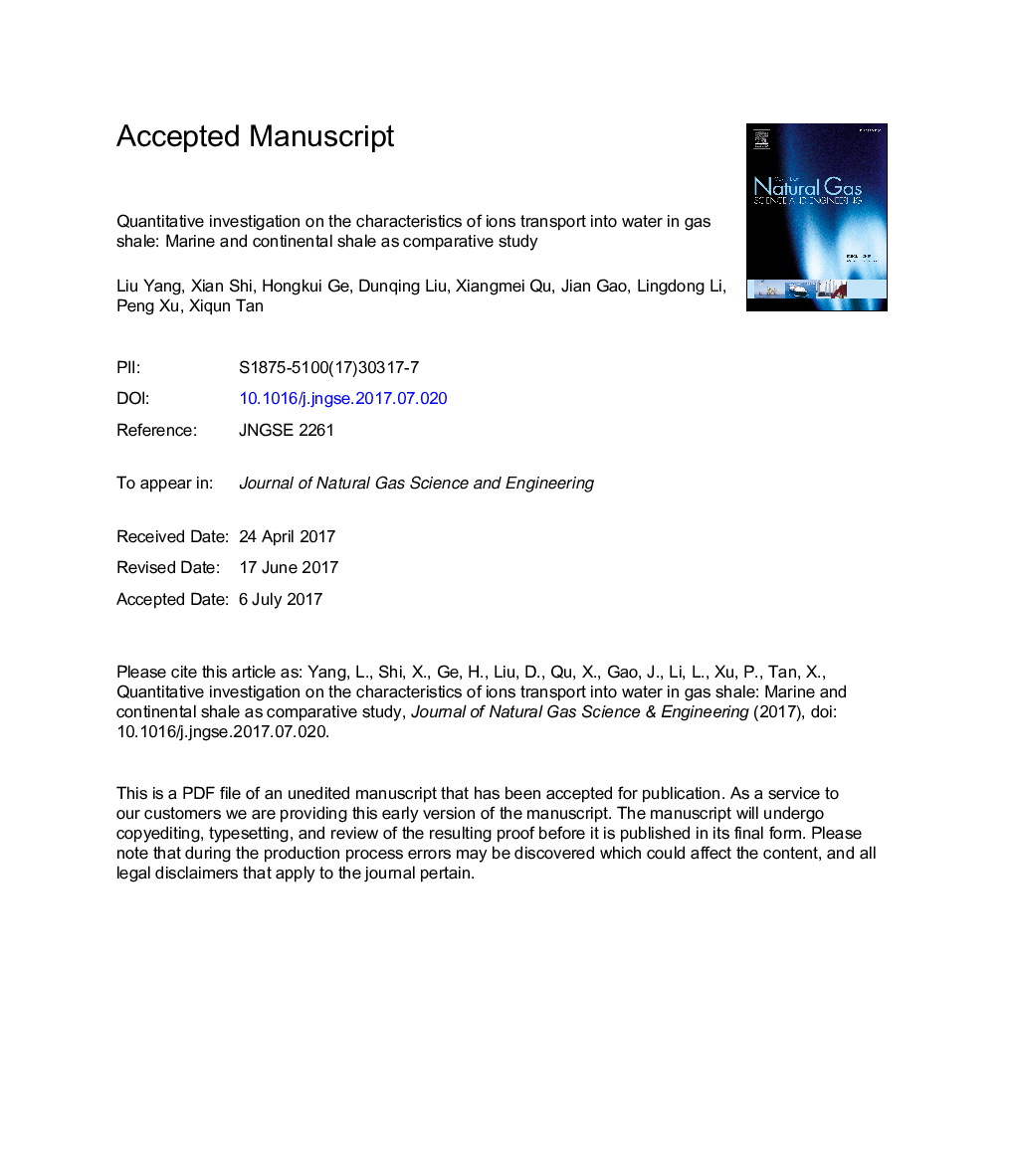| Article ID | Journal | Published Year | Pages | File Type |
|---|---|---|---|---|
| 5484948 | Journal of Natural Gas Science and Engineering | 2017 | 31 Pages |
Abstract
Investigating ions transport from matrix pores to water is essential for understanding the salinity profiles of shale gas. Previous publications have shown that salt ions can be sourced from the dissolution of precipitated salts and leaching of clay minerals. However, neither a clear standard method nor generally accepted evaluation parameters have been proposed for a quantitative study of the impact and role of these two factors. In this work, a new method based on crushed samples is proposed to avoid the influence of microfractures, and simulate the ions advection and diffusion into water. The characteristic parameters and influencing factors are studied by conducting comparative experiments on sandstone, marine and continental shale samples. The preliminary results showed that it is a credible method to study the impact of precipitated salts and clay minerals. Each transport curve can be divided into three parts: a linear imbibition-diffusion part, non-linear transition part and diffusion part. Three parameters of surface ions density, ions diffusion rate and ions transport capacity can be used for quantitative characterization. Compared with sandstone of relatively higher permeability, shale has a much larger surface ion density and ions diffusion rate, resulting in stronger ions transport capacity. Marine shale has a larger surface ions density than continental shale, suggesting that SID is primarily determined by precipitated salts. However, continental shale has a larger ions diffusion rate than marine shale, leading to a stronger ion transport capacity. It can be explained by more clay minerals in continental shale. Clay minerals that correspond to higher cation exchange capacity and specific surface area can promote faster ion exchange reactions. By comparison with dissolution of precipitated salts, leaching of clay minerals is the dominant mechanism for ion transfer from shale to water.
Related Topics
Physical Sciences and Engineering
Earth and Planetary Sciences
Earth and Planetary Sciences (General)
Authors
Liu Yang, Xian Shi, Hongkui Ge, Dunqing Liu, Xiangmei Qu, Jian Gao, Lingdong Li, Peng Xu, Xiqun Tan,
